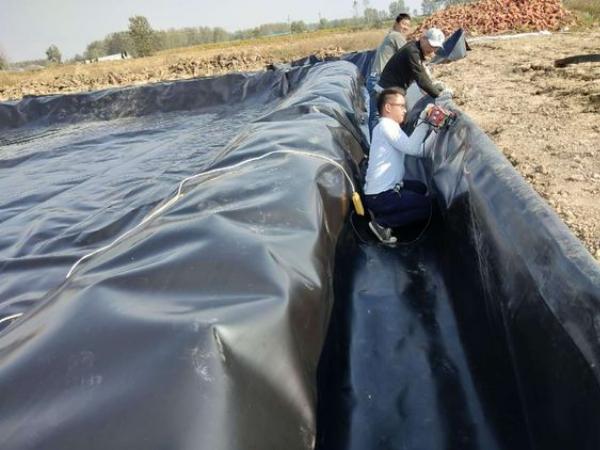The Smart Way to Find HDPE Sheets in Best Quality

Strong 8k brings an ultra-HD IPTV experience to your living room and your pocket.
You may have encountered HDPE sheets in various industries, but do you truly understand their significance? HDPE, or High-Density Polyethylene, is a remarkable material known for its strength, durability, and resistance to corrosion. When crafted into sheets, HDPE becomes a versatile solution for an array of applications spanning marine, food, storage, piping, and furniture industries. In this guide, we'll delve into the intricacies of HDPE sheets, helping you navigate the selection process and harness their full potential for your projects.
Understanding HDPE Sheet Thickness
HDPE sheets come in diverse thicknesses, each tailored to specific needs and applications. The thickness of an HDPE sheet influences its strength, flexibility, and weight, necessitating careful consideration when selecting the right one for your project.
According to industry standards, HDPE sheet thickness tolerances typically range as follows:
0.012″ to 3/4″ thick: +/-5%
1″ to 1 1/2″ thick: +/-10%
1 3/4″ to 4″ thick: + only
Additionally, HDPE sheets are available in custom sizes and thicknesses from various suppliers, providing flexibility to match your project's requirements precisely.
Factors Influencing Thickness Selection
When choosing the appropriate HDPE sheet thickness, several factors should be taken into account:
Project Size and Complexity: Larger or more intricate projects may necessitate thicker HDPE sheets to ensure adequate support and stability.
Load and Stress: Projects subject to higher loads or stress levels may benefit from thicker HDPE sheets to prevent deformation and failure.
Temperature and Environment: Harsher environments or temperature variations may warrant thicker HDPE sheets to withstand thermal expansion, contraction, and chemical corrosion.
Aesthetic and Functional Requirements: Consider the desired appearance and performance goals of your project, as thicker HDPE sheets may offer superior aesthetics and functionality in certain applications.
Exploring HDPE Sheet Types and Uses
HDPE sheets come in various types tailored to specific applications, including marine, food, automotive, and construction. Their uses are diverse and include boat hulls, cutting boards, vehicle components, and protective barriers. The versatility of HDPE sheets extends to their ability to resist impact, abrasion, UV radiation, and chemical exposure, making them indispensable across industries.
Practical Tips for Working with HDPE Sheets
Working with HDPE sheets requires careful planning and execution. Here are some practical tips:
Cutting: Use appropriate tools such as saws, routers, or CNC machines designed for cutting plastics to achieve clean, precise cuts.
Joining: Employ techniques like welding, adhesive bonding, or mechanical fastening to securely join HDPE sheets, ensuring structural integrity and longevity.
Finishing: Consider surface treatments or coatings to enhance aesthetics, improve durability, or impart specific properties such as anti-slip or antimicrobial features.
Factors Influencing Thickness Selection
When choosing the appropriate HDPE sheet thickness, several factors should be taken into account:
Project Size and Complexity: Larger or more intricate projects may necessitate thicker HDPE sheets to ensure adequate support and stability.
Load and Stress: Projects subject to higher loads or stress levels may benefit from thicker HDPE sheets to prevent deformation and failure.
Temperature and Environment: Harsher environments or temperature variations may warrant thicker HDPE sheets to withstand thermal expansion, contraction, and chemical corrosion.
Aesthetic and Functional Requirements: Consider the desired appearance and performance goals of your project, as thicker HDPE sheets may offer superior aesthetics and functionality in certain applications.
Exploring HDPE Sheet Types and Uses
HDPE sheets come in various types tailored to specific applications, including marine, food, automotive, and construction. Their uses are diverse and include boat hulls, cutting boards, vehicle components, and protective barriers. The versatility of HDPE sheets extends to their ability to resist impact, abrasion, UV radiation, and chemical exposure, making them indispensable across industries.
Practical Tips for Working with HDPE Sheets
Working with HDPE sheets requires careful planning and execution. Here are some practical tips:
Cutting: Use appropriate tools such as saws, routers, or CNC machines designed for cutting plastics to achieve clean, precise cuts.
Joining: Employ techniques like welding, adhesive bonding, or mechanical fastening to securely join HDPE sheets, ensuring structural integrity and longevity.
Finishing: Consider surface treatments or coatings to enhance aesthetics, improve durability, or impart specific properties such as anti-slip or antimicrobial features.
Conclusion: Harnessing the Potential of HDPE Sheets
In conclusion, HDPE sheets are a versatile and durable solution for a myriad of applications across industries. By understanding their properties, selecting the right thickness, and employing appropriate techniques, you can leverage the full potential of HDPE sheets in your projects. Whether you're building marine structures, fabricating food-grade equipment, or constructing automotive components, HDPE sheets offer unmatched performance and reliability.
Note: IndiBlogHub features both user-submitted and editorial content. We do not verify third-party contributions. Read our Disclaimer and Privacy Policyfor details.


